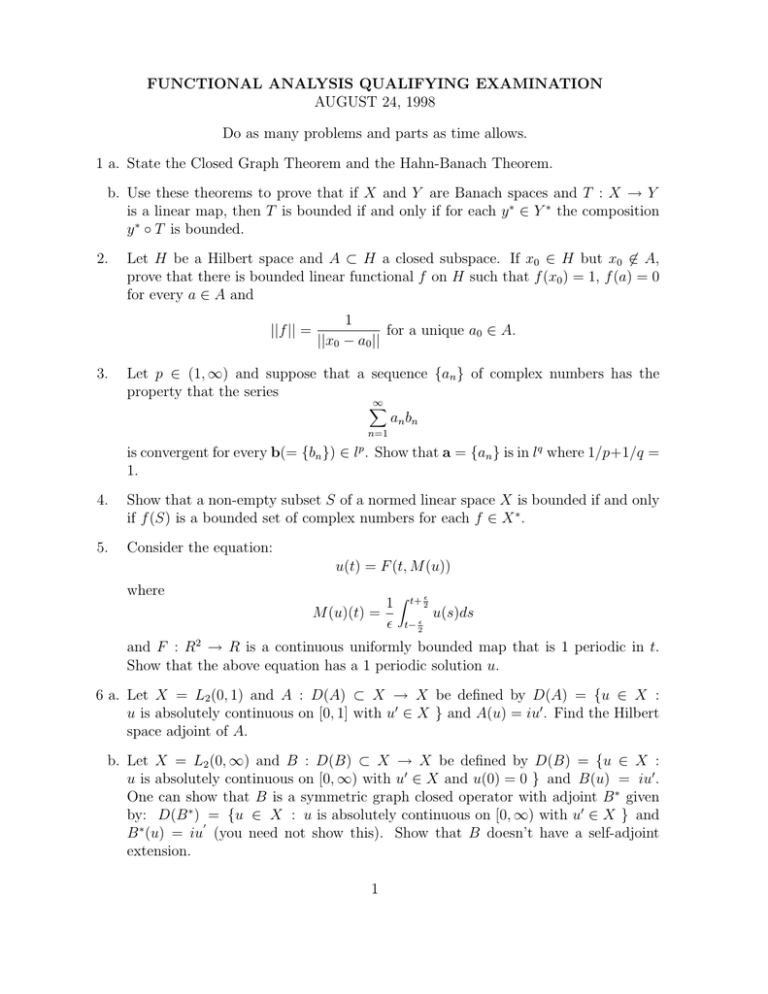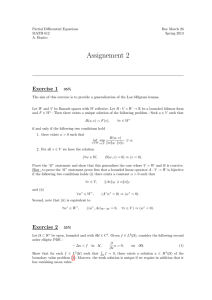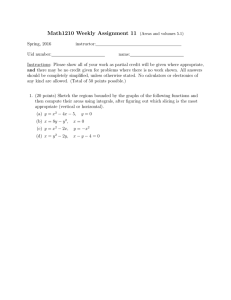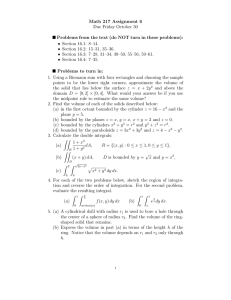FUNCTIONAL ANALYSIS QUALIFYING EXAMINATION AUGUST 24, 1998
advertisement

FUNCTIONAL ANALYSIS QUALIFYING EXAMINATION
AUGUST 24, 1998
Do as many problems and parts as time allows.
1 a. State the Closed Graph Theorem and the Hahn-Banach Theorem.
b. Use these theorems to prove that if X and Y are Banach spaces and T : X → Y
is a linear map, then T is bounded if and only if for each y ∗ ∈ Y ∗ the composition
y ∗ ◦ T is bounded.
2.
Let H be a Hilbert space and A ⊂ H a closed subspace. If x0 ∈ H but x0 6∈ A,
prove that there is bounded linear functional f on H such that f (x0 ) = 1, f (a) = 0
for every a ∈ A and
||f || =
3.
1
for a unique a0 ∈ A.
||x0 − a0 ||
Let p ∈ (1, ∞) and suppose that a sequence {an } of complex numbers has the
property that the series
∞
X
an b n
n=1
is convergent for every b(= {bn }) ∈ lp . Show that a = {an } is in lq where 1/p+1/q =
1.
4.
Show that a non-empty subset S of a normed linear space X is bounded if and only
if f (S) is a bounded set of complex numbers for each f ∈ X ∗ .
5.
Consider the equation:
u(t) = F (t, M (u))
where
1 Z t+ 2
u(s)ds
M (u)(t) =
ǫ t− 2ǫ
ǫ
and F : R2 → R is a continuous uniformly bounded map that is 1 periodic in t.
Show that the above equation has a 1 periodic solution u.
6 a. Let X = L2 (0, 1) and A : D(A) ⊂ X → X be defined by D(A) = {u ∈ X :
u is absolutely continuous on [0, 1] with u′ ∈ X } and A(u) = iu′ . Find the Hilbert
space adjoint of A.
b. Let X = L2 (0, ∞) and B : D(B) ⊂ X → X be defined by D(B) = {u ∈ X :
u is absolutely continuous on [0, ∞) with u′ ∈ X and u(0) = 0 } and B(u) = iu′ .
One can show that B is a symmetric graph closed operator with adjoint B ∗ given
by: D(B ∗ ) = {u ∈ X : u is absolutely continuous on [0, ∞) with u′ ∈ X } and
′
B ∗ (u) = iu (you need not show this). Show that B doesn’t have a self-adjoint
extension.
1
7. Suppose that X is a reflexive Banach space and F : M → R is weakly sequentially
lower semi-continuous where M is a closed bounded convex subset of X. Prove that
F attains a minimum on X.
What can be said if M is not convex?
2






